Creeping into the Frame of Scientific Cinematography
Today I'll reflect on a media project Aqua Kinema – an experimental science film in several parts – I made some years ago. First in the context in which I made it – as a student of observational documentary filmmaking, intrigued by the approaches of David MacDougal and the writings of Bruno Latour. And second, in the context in which I find myself now, preparing to teach a course "Science and the Cinema: Experiments on Film," an introduction to science and media studies for freshmen and sophomores organized around three modalities of filmic lenses onto science – "research," "documentary" and "fiction."
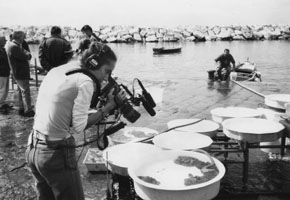
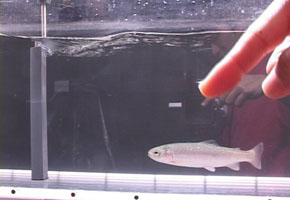
I began Aqua Kinema as a student of observational documentary. I was using a video camera as a medium of ethnographic research in a scientific laboratory. At the Lauder Laboratory at Harvard University, hi-speed videography guided research into hydrodynamics and the kinematics of underwater locomotion. I connected with a then-graduate student in the lab, James Liao. I interviewed him extensively and followed his research on the hydrodynamics of the rainbow trout.
The visual evidence I both uncovered and produced during my research at the laboratory provided sources for reflection. Parallels between my position as cinematographer and that of James, my scientific subject raised questions of epistemology and objectivity, scientific and filmic. Here in this image, the scientist subject is literally inserting his finger into my field of view, from both the front and back ends of the camera. What were the historical precedents for the kinds of experimental technologies and protocols with which both this hydrodynamicist ichthyologist and I were engaged with our cameras?
History – that of Etienne-Jules Marey's well-known visual exploration of animal locomotion, as well as his and Eadweard Muybridge's proto-development of cinema technologies in the 1880s and 1890s – seemed to provide a guide to deciphering the present relations between myself and my subject and their genealogy. Contemplation of both my and my subject's relationship to the visual remnants of this history, in particular a series of experiments Marey conducted on underwater locomotion, resulted.
My goal then – a goal then – to produce and interrogate filmic documentation as research into the historical epistemology of scientific practice and the visual epistemology of documentary aesthetics.
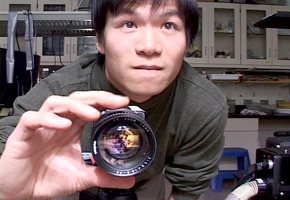
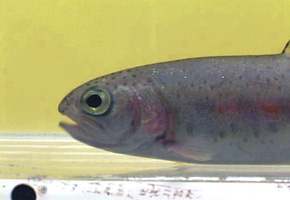
This is James Liao – then a doctoral student at Harvard and now an assistant professor and lab director at the University of Florida.
And on the right – this is the Rainbow Trout. The two characters are a cameraman and fish. When I set out, I was trying to describe laboratory practice, something of the tacit knowledge at stake in the laboratory, as described by Michael Polanyi and Harry Collins. The various acts of looking, containing, capturing gesture and rendering it visual. The disciplinary structures imposed on both the animal subject (or working object) and the human actor (the scientist himself) struck me as co-productive, co-constitutive as reified on video.
Watch clip: The Researcher (5 min.)
I chose to impose my own disciplinary framework in the form of an aesthetic conceit. My film, The Researcher, is a reflection on these interrelations, choreographed to a distorted version of Schubert's 1817 lied called Die Forelle, or in English, The Trout. About a fisherman trying to catch a trout as the singer attempts to capture the fisherman. Animals and people under observation, multiple iterations of the hunt and chase, under water and on film.
Michael Renov has proposed four tendencies or discursive functions for what he calls documentary. Revelation/preservation, persuasion/education, analysis/interrogation and aesthetic exploration/expression. I believe that these are useful features – though I would say no criteria for strict typology. Each of these tendencies can exist in varying degrees within a particular film. In this case, and in the cases raised over the course of this panel, they provide lenses onto a deeper contemplation of the relationships among the scientific fact and the visual document. For me, for this particular project, the process and exploration of the aforementioned modalities took a historical turn.
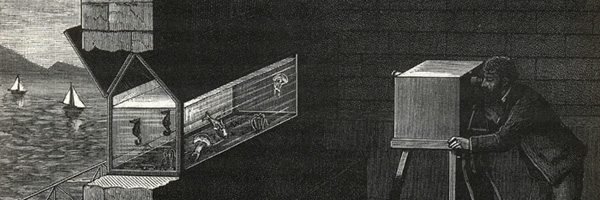
To an image. To this image. Not a photograph, no illusion of indexicality or an exacting record, per se. But an opening all the more. An etching that depicts Etienne-Jules Marey, at work in his aquarium laboratory in the Bay of the Naples in 1890. We know of Marey as an innovator in development of cinema, for his development of chrotophotograpic rendering devices for the analysis and preservation of phases in organisms' movement through space and time, as published in texts including Le Mouvement and Le Methode Graphique. His work on birds and people is best known. Less known are his sea creatures; in his own way, he was an early Cousteau, a Victorian Painlevé, secluded away on winter holiday in Italy.
This etching appeared in an 1890 article in La Nature, accompanying publication of some of Marey's early results using cinematographic apparatus to analyze the movements of marine creatures. If you are interested, I've translated and edited the publication and you can find it herehere.
The parallels with the Lauder Laboratory struck me. And I wondered: what kind of "scientific fact" or "visual evidence" was this etching. Was there any such moment when these experiments transpired? How could I productively interact with this etching, get inside it, interrogate its coded references. The acts of scientific observation and photographic transcription represented therein?
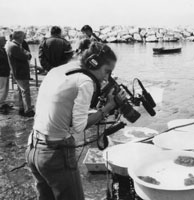
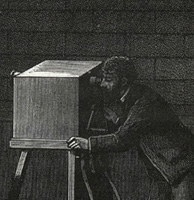
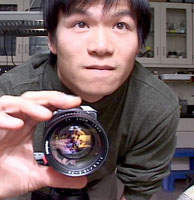
This became the origin of the next research film. It was a project to mediate among my own position as historian, as well as Dr. Liao's and Marey's. We all three worked with cameras. We all three negotiated unstable – ever fluctuating visible evidence.
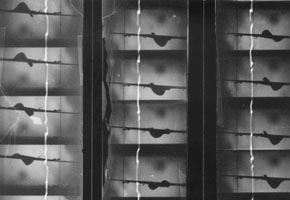
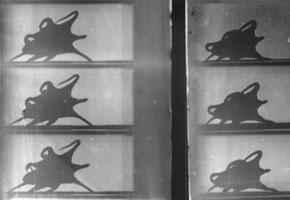
To locate Marey's laboratory what mattered most were the photographic frames – the pieces of movement broken down. And these I found in archives throughout France. Some in old cardboard boxes buried deep away, some neatly preserved in strips of archival plastic. Each archival interaction was an excavation and an interpersonal negotiation.
Then I went to Naples, where Marey had a vacation home, a villa by the Bay of Naples. I went to see what he had seen. History making became an act of channeling; visible evidence – mine, his and Dr. Liao's – became the media. My output took on multiple forms, each – like Marey's films, like Liao's films – a kind of research film.
A research film results from the application of cinematography to the systematic search for new knowledge in the sciences. This definition embraces its uses as an instrument of observation, description, classification or the formulation or testing of hypotheses.Anthony R. Michaelis, Research Films (New York: Academic Press, 1955), p. 1-2.
Together these four research films of my own making took shape as a four-channel installation. Four different ways of envisioning the relationship between myself, the contemporary scientist's (Liao) and the historical chronophotographer's (Marey) acts of looking and making meaning out of nature.
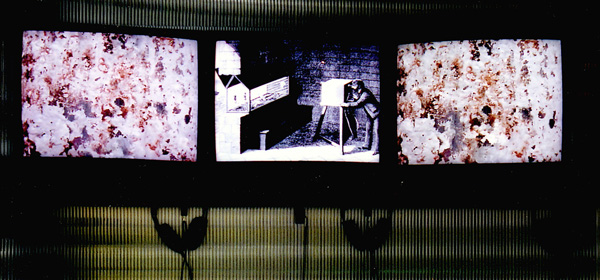
Here is a clip from one. It's a loop, called Wave, – about a fluctuation between past and present. My embodied experience with the confined animal objects of study I found in Marey's Neapolitan haunts – and the broken, fractured, fleeting frames of Marey's own contemplation of his sight of research. What is represented herein in as oscillation between visible documents, broken and sutured in time.
Watch film: Wave (5 min. loop)
Finally, there is Locomotion in Water.